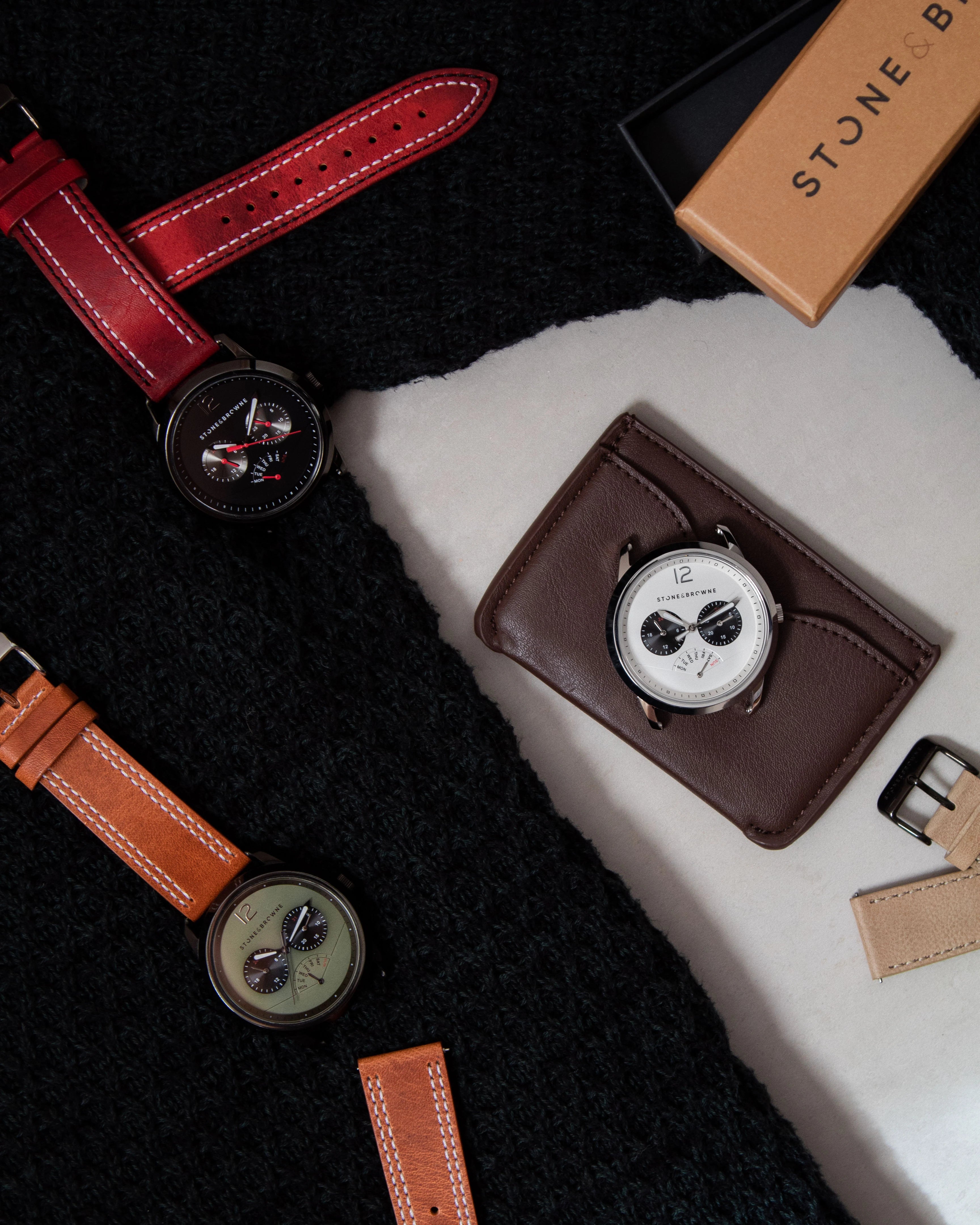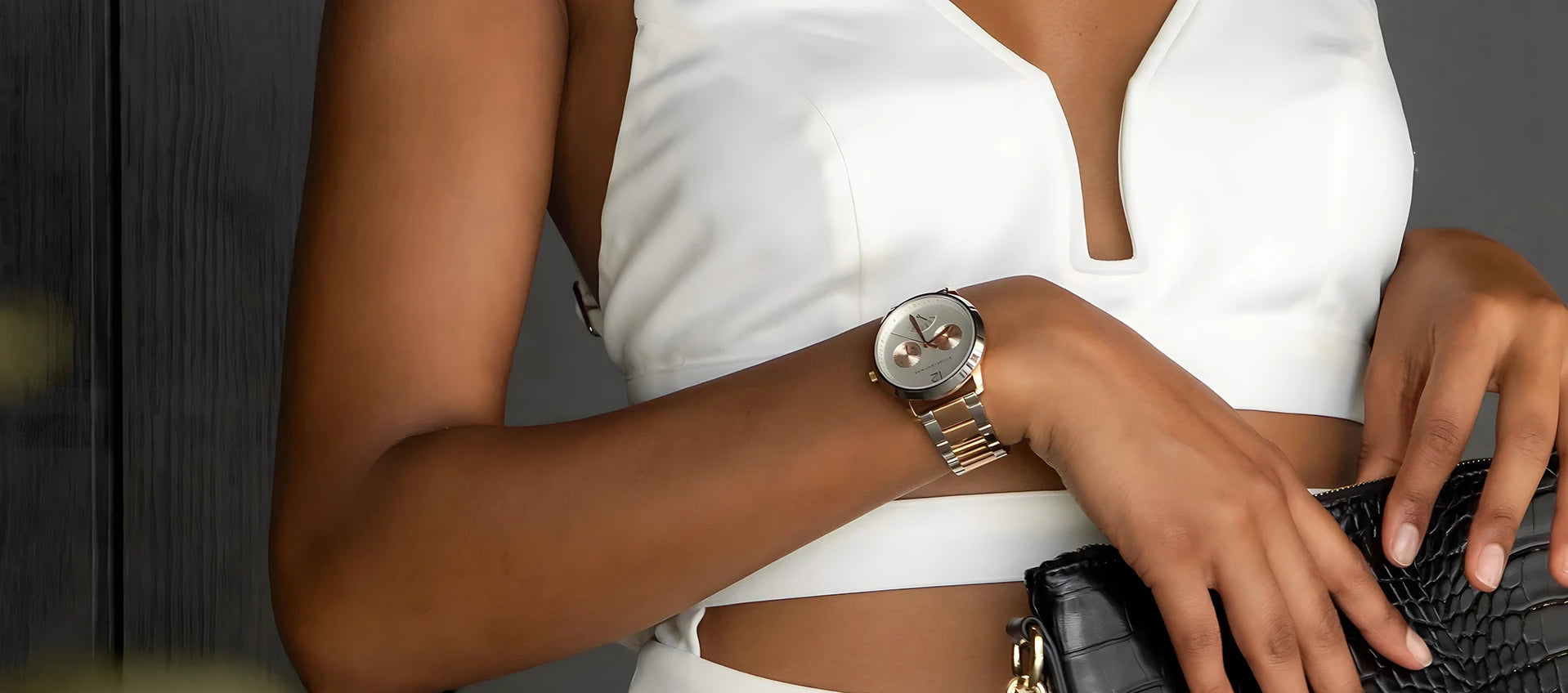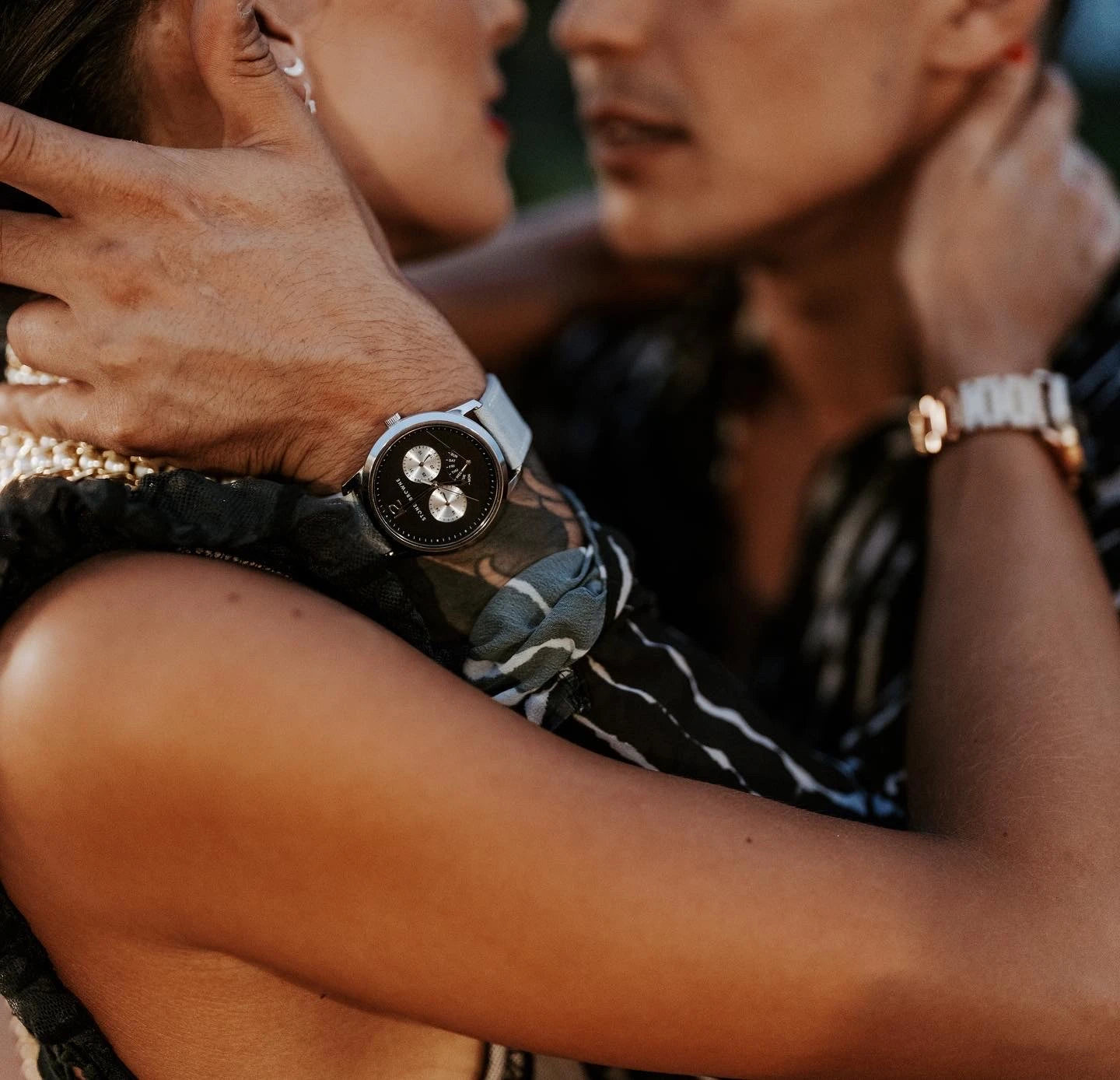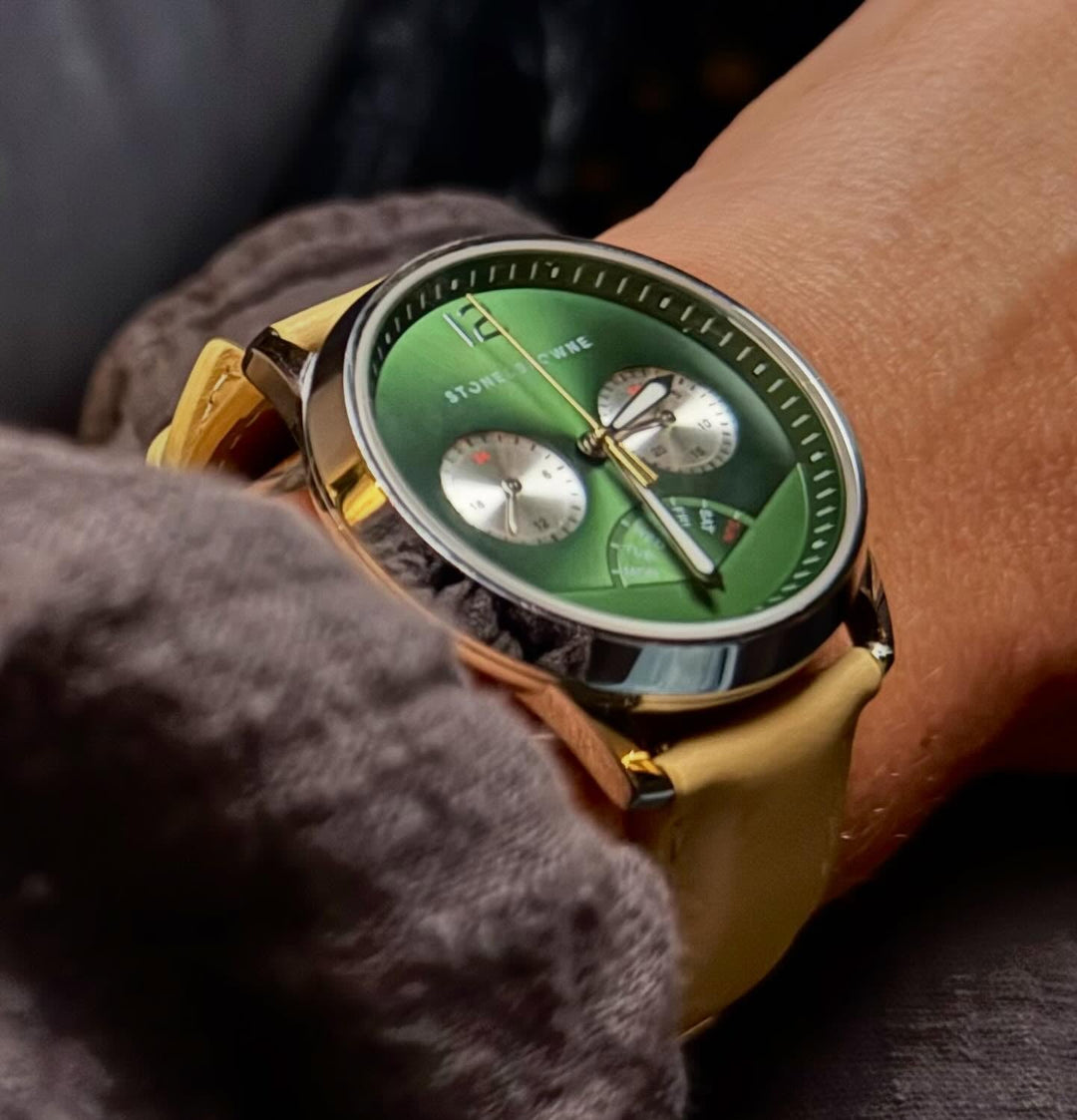At a glance
- Check for cracking, stretching, scratches, or discolouration on the strap.
- Notice if the fit changes or causes discomfort, the strap may no longer fit your wrist properly.
- Odours, skin irritation, or broken clasps indicate it’s time for a replacement.
- A new strap can update your style without replacing the watch itself.
A watch strap does more than hold the timepiece in place. It defines the look, feel, and comfort of the watch on your wrist. Over time, even the most durable straps begin to show signs of wear. Sometimes the issue is purely cosmetic—fading, scratches, or discolouration. Other times, it’s about performance, comfort, or how well the strap suits your style.
Knowing when to replace your watch strap helps protect your watch’s lifespan and keeps it looking as sharp as the day you bought it.
Here are the clearest signs that it's time for a new watch strap and why choosing a quality replacement makes all the difference.
The Strap Shows Visible Wear
Visible wear is the most common reason people replace their watch straps. Signs of worn leather include surface cracking, frayed edges, stretched holes, and uneven fading.
Even if the leather is genuine, it may develop a unique patina with regular use. If your strap feels rough or brittle to the touch, the material has likely deteriorated beyond the point of repair.
Stainless steel straps also show wear over time. If the bracelet looks dull, cleaning may no longer restore its shine. Scratches that won’t buff out, a dull finish, or links that feel loose are all signs that the strap is wearing out. Silver may lose its shine, and gold can look flat even after cleaning.
If the strap no longer complements the watch face or has become structurally unreliable, it's time for a fresh upgrade.
It No Longer Fits Like It Used To
You’ll often feel it before you see it. One day, the strap that used to sit just right starts shifting, sliding, or needing constant adjustment. Leather stretches over time, especially at the buckle holes, and once it loses its shape, the fit never quite feels secure again. It’s a subtle change, but one that makes a big difference in daily wear.
Metal straps don’t always fit the same way over time. Your wrist size may have changed, or the bracelet no longer sits as it used to. Some days it feels too tight, while others feel too loose. Temperature can also play a role. Metal naturally expands with heat and contracts in the cold, which can cause a slight change in fit. If your silver strap isn’t fitting comfortably anymore, it’s worth resizing or swapping it for one that does.
Stone & Browne offers leather straps in a wide range of unique colours, such as cognac, sand, rich pink and more, giving you options that not only match your style but fit your wrist perfectly.
Persistent Odours or Irritation
Straps should feel clean and comfortable, even after a full day of wear. If your strap produces a lingering odour or causes irritation, it’s likely beyond routine maintenance.
Leather absorbs moisture, and over time, sweat can sink into the material. Even with regular wiping, the inner layers can retain odours that don’t fully dissipate. Sweat may also cause staining, which is more noticeable on light colours such as tan, cream or pastel.
Metal bands, particularly stainless steel styles, may trap dirt or oils between links. If irritation or redness appears under the bracelet, especially on warmer days, it could indicate a buildup of grime or a reaction to aged materials.
When cleaning no longer restores freshness or comfort, it’s safer to replace the strap altogether to maintain hygiene. A neutral option, such as a black leather strap, is a reliable choice for everyday wear.
Damaged or Failing Hardware
It doesn’t take much for a strap to let you down. A clasp that won’t stay shut. A spring bar that shifts when it shouldn’t. Even a torn loop can leave the end flapping loose. These may seem like small faults, but when they fail, you risk losing the entire watch.
These issues often occur gradually. A stainless steel clasp may initially exhibit a slight misalignment, but it can eventually stop holding altogether. A leather strap might lose its keeper loop due to wear near the stitching.
Even if the watch continues to keep time perfectly, failing hardware still creates a real risk of losing or damaging the piece. Regularly check how the clasp performs and whether the spring bars feel secure. If anything feels off, replacing the strap with one that has sturdy, well-functioning hardware offers instant peace of mind.
Your Style Has Evolved
Style changes. What worked for you a few years ago might not feel the same right now. The strap that once matched everything could start to feel out of place, and that’s completely normal.
Many watch owners start with a neutral strap, such as classic brown leather or polished silver, then shift toward softer shades or bolder tones like red as their style matures. Swapping a dark strap for a lighter colour, such as bone or latte, can refresh your look entirely.
Want something more polished for business settings? A rose gold and gun metal bracelet brings a mix of structure and shine. Need a versatile everyday option? A soft leather strap in white or light blue keeps the look understated but distinctive.
Instead of buying a new watch, changing the strap gives your timepiece a fresh, modern update while keeping the watch you already love.
You Keep Repairing or Adjusting
There comes a point when fixing a strap becomes more of a hassle than it’s worth. If you’ve punched extra holes, tightened the clasp more than once, or tried patching up a loose keeper, the strap has likely reached its limit. Leather loses shape. Metal links stop lining up. Quick fixes don’t last.
A clean replacement not only looks better but also saves you from dealing with the same issue week after week. Stone & Browne offers well-built leather and stainless steel options designed to withstand daily wear, so your watch feels solid every time you wear it.
Switching Straps to Match the Occasion
Not every strap suits every setting. Whether you're attending a formal event or spending a relaxed weekend outdoors, your strap should match the occasion.
With Stone & Browne’s interchangeable strap design, changing looks takes just seconds. You can pair a black watch face with a silver bracelet for meetings, then switch to a mocha or light blue leather strap for more casual days. Heading to dinner? Choose a black leather band or a brown stitched one for a refined accent.
Switching straps extends the versatility of your watch without requiring an entirely new piece.
Your watch strap shapes your entire experience with the timepiece. If it no longer looks right, fits well, or supports your lifestyle, replacing it is a simple way to restore both function and style.
Whether you choose a sleek stainless steel bracelet in silver or rose gold, or a supple leather strap in mocha, Stone & Browne offers refined options for every wrist and occasion.
Explore Stone & Browne’s full range of modern watches with interchangeable stainless steel and leather straps to find the perfect match for your style.
FAQs
How often should I replace my watch strap?
The lifespan of a strap depends on how often you wear it and what it’s made from. Leather typically lasts 1–2 years, possibly longer if it’s properly cared for. Steel bands can last 3–5 years, especially if you keep them clean and check the hardware regularly.
How long does a watch strap last with daily use?
If you wear your watch every day, expect a leather strap to last around 12 months on average. In high-humidity environments or with heavy wear, the lifespan may be shorter, sometimes 6 months or less. Stainless steel bracelets can endure daily wear for several years before showing signs of looseness or dulling.
What’s the best way to prevent a leather watch strap from cracking?
To keep your leather watch strap soft and supple, clean it regularly to remove dust and apply a small amount of leather conditioning cream. This keeps the leather soft, helps it stay flexible, and slows down cracking. Consistent care significantly extends the strap’s lifespan.






